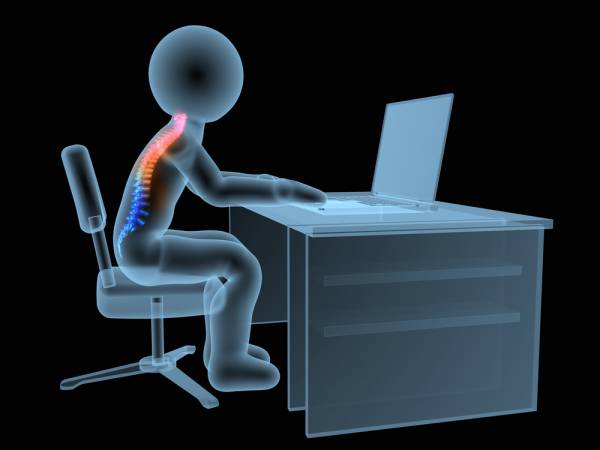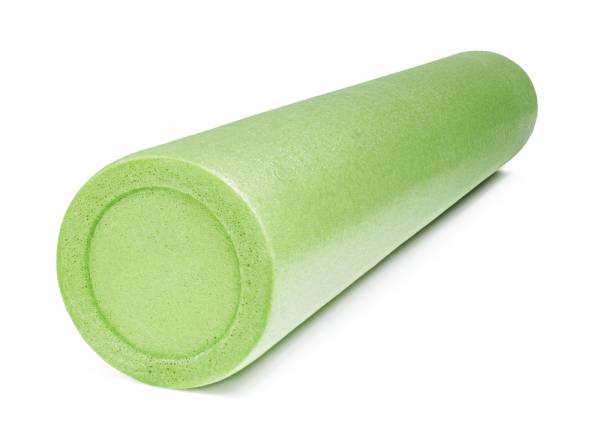If you work at a desk and typically sit for extended periods of time during the day, you may be suffering from more than just a case of the afternoon yawns. Sitting can leave you feeling exhausted, sore, and unmotivated at the end of a long day at the office, but it can do much worse.
Over time, sitting in the same position can negatively impact your natural posture and the way your body is intended to move. Sitting is excellent for resting from activity, but the body’s posture is more natural when standing or lying down. Our bodies are designed to be in motion, not static all day sitting in a swivel chair. Even if your desk is completely ergonomic, your body is still going to be locked in certain positions during the day.
In any of these scenarios, you are going to slowly but surely reset your natural posture to accommodate the posture you maintain at work. On its face this doesn’t sound that terrible, but resetting your body in this way can wreak havoc on your muscles and joints.
How Perpetual Sitting Destroys Posture
When your muscles are stuck in the same position for hours on end, day after day, they begin to resize themselves to accommodate these habitual, long-term sitting sessions. Let’s take a snapshot of how working in a seated position for years has taught your body to semi-permanently alter itself:
- Your back and posterior shoulder muscles are overextended from having your hands placed on a keyboard or writing on a desk.
- Your chest muscles and biceps have learned to remain contracted from having your hands and arms out in front of you.
- The low back and shoulders have rolled forward, which can cause low back pain and increase your chances of shoulder injuries.
- Your hip flexors and quadriceps have tightened from staying locked at or near a ninety-degree angle.
All of this causes uncomfortable knots in the muscle groups that have been contracted while you are sitting (pectoralis, anterior deltoid, abdominals, and hip flexors, to name a few).
So What Does this All Mean?
Are you familiar with that uncomfortable, hunched over look that most of the older executives, bosses, and managers at your company have? Terrified of the back, shoulder, and knee joint pains that your bosses complain about around the water cooler?

Take a good look, because that is going to be you in a few years if you don’t do something about it. I’ve found that the majority of my friends and clients (age ranging from mid twenties to early thirties) who work at desks during the day are already beginning to have postural changes, aches, and pains. The majority of them experience shoulder issues and injuries, low back pain, tight hips, and poor form when bending and lifting, which can lead to knee injuries and exacerbate existing back pain.
Altering natural muscle lengths affects posture and strength, and can also decrease circulation to certain muscle groups and areas of the body. So how can we start correcting these problems and work on preventing further postural deviation and injury?
Benefits of Foam Rolling and Self Myofascial Release (SMR)
Foam rolling and other methods of SMR are excellent ways to alleviate pain, help muscles return to their normal lengths, increase circulation, and decrease your chances of injury in both work and activity.
Think of it this way: the muscles that are contracted all day while sitting at a desk have developed knots in them. These knots (or adhesions) limit the range of motion of your joints and muscles, which also decreases circulation. Imagine it like a tangle or knot in a Slinky. Putting pressure on those knots with a foam roller or other SMR tools like a lacrosse ball will help massage the knot out so the muscle group can return to its intended length.

Rules of Thumb When Rolling
Some key areas to roll to help correct posture and alleviate pain include the quadriceps, trapezius, deltoids, latissimus dorsi, inner thighs, and calf muscles. Here’s how you go about it:
- Using a foam roller or ball, roll over the belly of the muscle group until you find a trigger point or pain point.
- Avoid rolling on or close to your joints.
- Apply pressure to that point for at least ten to fifteen seconds, but no more than 45 seconds if you are just starting out.
- Rest as needed, and repeat this process for the rest of the muscle group.
Keep in mind that the rolling itself is only used identify the knots in your muscles. The static pressure you apply to that trigger point or knot is what flattens it out.
Take It to Work
One of the best features about foam rollers and other SMR devices like lacrosse balls is that they are inexpensive and portable. Bring them with you to work and leave them in the office. Try to take ten to twenty minutes during your workday or lunch break to roll out your trouble areas.
Do you have a favorite foam roller or tool you keep in the office? How do you keep yourself mobile while stuff at work all day? Post your thoughts to the comments below.
Photos courtesy of Shutterstock.






